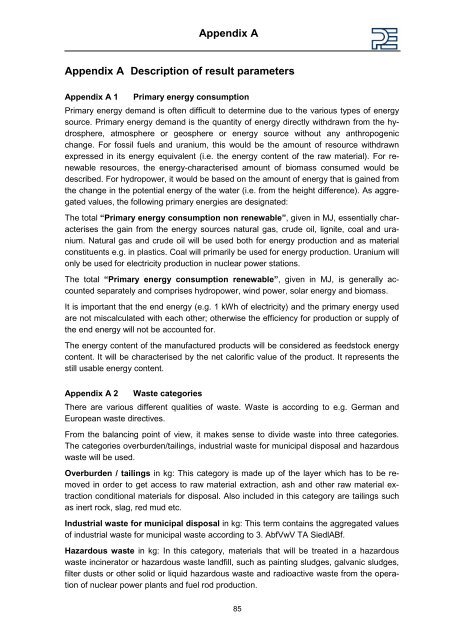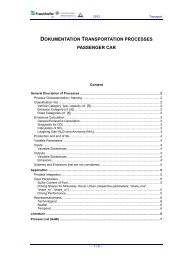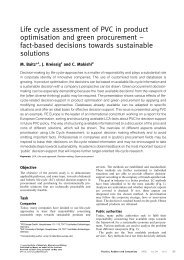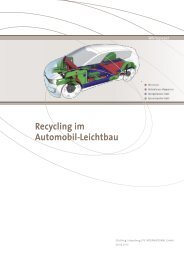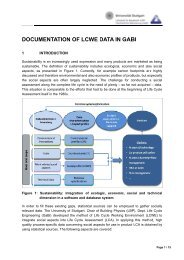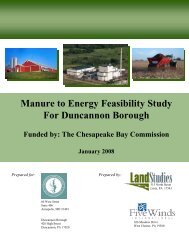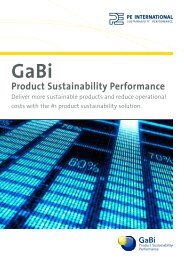Paper_Clip_Tutorial Part1.pdf - GaBi Software
Paper_Clip_Tutorial Part1.pdf - GaBi Software
Paper_Clip_Tutorial Part1.pdf - GaBi Software
Create successful ePaper yourself
Turn your PDF publications into a flip-book with our unique Google optimized e-Paper software.
Appendix A<br />
Appendix A Description of result parameters<br />
Appendix A 1 Primary energy consumption<br />
Primary energy demand is often difficult to determine due to the various types of energy<br />
source. Primary energy demand is the quantity of energy directly withdrawn from the hydrosphere,<br />
atmosphere or geosphere or energy source without any anthropogenic<br />
change. For fossil fuels and uranium, this would be the amount of resource withdrawn<br />
expressed in its energy equivalent (i.e. the energy content of the raw material). For renewable<br />
resources, the energy-characterised amount of biomass consumed would be<br />
described. For hydropower, it would be based on the amount of energy that is gained from<br />
the change in the potential energy of the water (i.e. from the height difference). As aggregated<br />
values, the following primary energies are designated:<br />
The total “Primary energy consumption non renewable”, given in MJ, essentially characterises<br />
the gain from the energy sources natural gas, crude oil, lignite, coal and uranium.<br />
Natural gas and crude oil will be used both for energy production and as material<br />
constituents e.g. in plastics. Coal will primarily be used for energy production. Uranium will<br />
only be used for electricity production in nuclear power stations.<br />
The total “Primary energy consumption renewable”, given in MJ, is generally accounted<br />
separately and comprises hydropower, wind power, solar energy and biomass.<br />
It is important that the end energy (e.g. 1 kWh of electricity) and the primary energy used<br />
are not miscalculated with each other; otherwise the efficiency for production or supply of<br />
the end energy will not be accounted for.<br />
The energy content of the manufactured products will be considered as feedstock energy<br />
content. It will be characterised by the net calorific value of the product. It represents the<br />
still usable energy content.<br />
Appendix A 2 Waste categories<br />
There are various different qualities of waste. Waste is according to e.g. German and<br />
European waste directives.<br />
From the balancing point of view, it makes sense to divide waste into three categories.<br />
The categories overburden/tailings, industrial waste for municipal disposal and hazardous<br />
waste will be used.<br />
Overburden / tailings in kg: This category is made up of the layer which has to be removed<br />
in order to get access to raw material extraction, ash and other raw material extraction<br />
conditional materials for disposal. Also included in this category are tailings such<br />
as inert rock, slag, red mud etc.<br />
Industrial waste for municipal disposal in kg: This term contains the aggregated values<br />
of industrial waste for municipal waste according to 3. AbfVwV TA SiedlABf.<br />
Hazardous waste in kg: In this category, materials that will be treated in a hazardous<br />
waste incinerator or hazardous waste landfill, such as painting sludges, galvanic sludges,<br />
filter dusts or other solid or liquid hazardous waste and radioactive waste from the operation<br />
of nuclear power plants and fuel rod production.<br />
85


